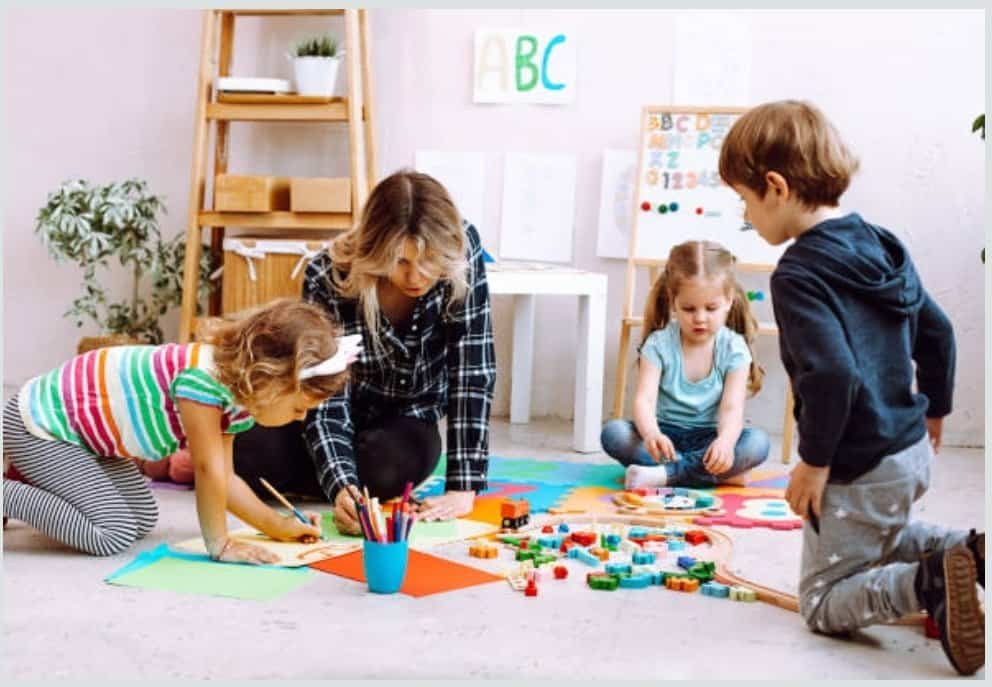Introduction
Early childhood education lays the foundation for a child’s future success, and one of the key pillars in this journey is reading. In this article, we will delve into the multifaceted world of early childhood education, exploring the pivotal role of reading in shaping young minds.
Benefits of Early Childhood Education

Cognitive Development
Early childhood education significantly contributes to cognitive development. Through carefully curated educational activities, children enhance their problem-solving skills, critical thinking, and creativity.
Social and Emotional Skills
Beyond academics, early education fosters the development of social and emotional skills. Interacting with peers and educators helps children navigate social situations and understand their emotions.
Language Acquisition
The formative years are crucial for language acquisition. Early education programs create an environment where children are exposed to rich language experiences, accelerating their language development
The Power of Reading in Early Childhood
Building Vocabulary
Reading exposes children to a diverse vocabulary, expanding their word bank. This not only aids in effective communication but also lays the groundwork for academic success.
Enhancing Imagination
Immersing children in captivating stories stimulates their imagination. This imaginative play is vital for creativity, problem-solving, and developing a lifelong love for learning.
Fostering a Love for Learning
A positive early reading experience creates a lasting impression. Children who develop a love for reading are more likely to approach learning with enthusiasm and curiosity throughout their academic journey.
Choosing the Right Books for Early Childhood Education

Age-Appropriate Content
Selecting books suitable for a child’s age ensures engagement and comprehension. From colourful picture books for toddlers to simple narratives for pre-schoolers, age-appropriate content is key.
Interactive and Engaging Features
Books with interactive elements, such as flaps to lift or textures to touch, enhance the reading experience. These features promote sensory engagement and make learning enjoyable.
Diversity in Literature
Introducing children to a diverse range of literature helps cultivate an understanding of different cultures, perspectives, and experiences. A varied reading diet enriches their worldview

Reading Techniques for Young Children
Interactive Storytelling
Engage children in the storytelling process. Ask questions, encourage them to predict what happens next, and let their imaginations soar. This active participation deepens their connection with the narrative.
Phonics and Word Recognition
Incorporate phonics and word recognition activities to lay the foundation for literacy. Breaking down words into sounds facilitates early reading skills.
Incorporating Technology
While traditional books are essential, judicious use of educational apps and digital resources can complement learning. Technology adds a dynamic element to the reading experience.
Challenges in Early Childhood Education Reading Answers
Identifying Learning Disabilities
Early education is a critical period for identifying learning disabilities. Educators and parents must collaborate to recognize potential challenges and provide timely interventions.
Overcoming Attention Issues
Young children may struggle with maintaining focus. Implementing interactive and varied teaching methods can help capture and sustain their attention.
Addressing Language Barriers
In multicultural settings, language barriers can hinder learning. Tailoring reading programs to accommodate diverse linguistic backgrounds ensures inclusivity.
Parental Involvement in Early Childhood Education
Reading Together
A collaborative approach involving parents in reading activities strengthens the parent-child bond. Shared reading experiences create positive associations with learning.
Creating a Literacy-Rich Environment
Surrounding children with books at home and creating a literacy-rich environment encourages independent exploration and a love for reading.
Partnering with Educators
Parents and educators working together create a support system for the child. Regular communication ensures alignment in educational strategies.
Impact of Early Childhood Education on Academic Success
Long-term Educational Achievements
Research consistently highlights the correlation between early education participation and long-term academic success. The foundational skills acquired set the stage for future achievements.
Breaking Socioeconomic Barriers
Quality early education acts as a catalyst for breaking socioeconomic barriers. It provides equal opportunities for children from diverse backgrounds, leveling the playing field.
Developing a Lifelong Learning Attitude
Beyond academic achievements, early education instills a passion for learning. Children develop a growth mindset, viewing challenges as opportunities to learn and grow.
Strategies for Teachers in Early Childhood Education
Differentiated Instruction
Recognizing and catering to diverse learning styles is essential. Teachers employing differentiated instruction address the individual needs of each child.
Incorporating Play-Based Learning
Play is a crucial aspect of early childhood education. Integrating play-based learning activities not only enhances engagement but also facilitates holistic development.
Continuous Assessment and Feedback
Regular assessment and constructive feedback provide insights into a child’s progress. This iterative process allows for timely adjustments in teaching strategies.
Incorporating Technology in Early Childhood Education Reading Programs
Educational Apps
Thoughtfully curated educational apps can supplement traditional learning methods. These apps often incorporate gamified elements, making learning interactive and enjoyable.
Digital Storytelling
Digital storytelling platforms bring narratives to life through animations and audio elements. These tools appeal to the tech-savvy younger generation.
Balancing Screen Time
While technology is a valuable tool, maintaining a balance between screen time and traditional learning methods is crucial for a well-rounded education.
Addressing Diversity in Early Childhood Education

Inclusive Literature
Curating a collection of books that represent diverse cultures, backgrounds, and experiences ensures inclusivity. Children learn to appreciate and respect differences.
Cultural Sensitivity
Educators must approach diversity with cultural sensitivity. Understanding and respecting various cultural norms create an inclusive learning environment.
Multilingual Approaches
In multilingual settings, incorporating diverse languages in reading programs acknowledges linguistic diversity. This approach aids in language development and cultural appreciation.
Community Involvement in Early Childhood Education Programs
Libraries and Reading Programs
Community libraries and reading programs play a vital role in supplementing early education. These resources provide access to a wide range of literature.
Collaborations with Local Organizations
Collaborating with local organizations, such as community centers and NGOs, enhances the reach of early education programs. These partnerships contribute to a holistic learning experience.
Empowering Communities through Literacy
Early education programs should not be confined to classrooms. Empowering communities through literacy initiatives creates a positive ripple effect, fostering a culture of lifelong learning.
Measuring Success in Early Childhood Education Reading Programs
Assessment Metrics
Establishing clear assessment metrics allows educators to track a child’s progress. These metrics should encompass cognitive, social, and emotional development.
Tracking Progress
Regularly tracking progress provides valuable insights into the effectiveness of the reading program. Adjustments can be made based on individual and collective achievements.
Long-term Impact Studies
Conducting long-term impact studies assesses the enduring effects of early education. Understanding the sustained benefits guides future improvements in educational strategies.
Case Studies: Successful Early Childhood Education Reading Programs
Highlighting Effective Models
Examining successful case studies sheds light on effective models. Identifying commonalities in these programs helps replicate their success in different contexts.
Learning from Success Stories
Success stories inspire and offer practical insights. Learning from the experiences of others enhances the adaptability and effectiveness of early education programs.
Replicating Best Practices
Identifying and replicating best practices from successful programs ensures a standardized approach to early childhood education. Continuous improvement is key.

FAQs
It’s never too early to start reading to your child. Even infants benefit from hearing the rhythm and melody of language
Educational apps can complement traditional books, but a balanced approach is essential. Both mediums contribute to a holistic learning experience.
Teachers can incorporate multilingual approaches, celebrate linguistic diversity, and provide additional support for language development.
Community libraries serve as valuable resources, offering access to a variety of books and fostering a love for reading outside the classroom.
Surrounding children with books, reading together, and incorporating literacy into daily activities contribute to a literacy-rich home environment.
